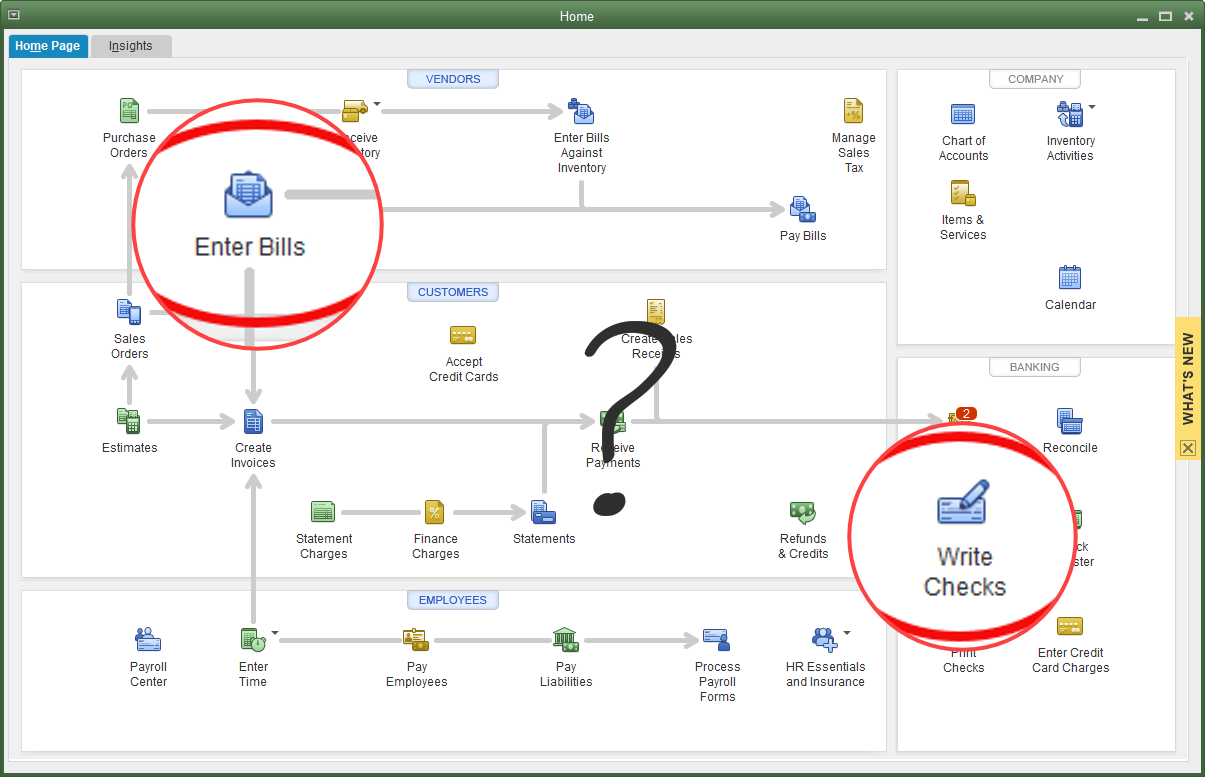Blog 
Click here to go back
Check or Bill? Which Should it Be?

You need to record the expenses of your organization. You know in QuickBooks there are options. You can choose to enter a check, or you can choose to enter a bill. Which is better?

The choice is going to vary from one organization to another. Let’s look at some of the pluses and minuses of each solution.
Writing a check is simple, fast, and easy. It’s one step. The check form in QuickBooks posts the amount to the expense account you choose and subtracts it from the bank balance.

Entering a bill for an expense begins a process just a little more involved. The Bill form in QuickBooks enters the expense, but doesn’t affect the bank account. Instead, it registers the fact that you owe that particular vendor a certain amount of money to be paid in the future.


Above are the screenshots of 1), the bill, and 2), the vendor center showing the balance due the vendor for that bill.
The second step of the process is paying the bill through the Pay Bills process in QuickBooks.
So, if the Write Checks method is so much faster and easier than creating bills (using accounts payable), why would anyone want to enter bills?
There are two common reasons. One is simply a matter of convenience for some people. A bookkeeper may receive mail everyday and as that mail is processed, enter the bills that came. This allows that bookkeeper then, at some point, to create an Unpaid Bills report in QuickBooks. The business owner can look at the list and select the ones they wish to pay. The bookkeeper can then prepare those checks.
The second reason has to do with accounting and reports that enable better management of an organization. Remember, whichever is used, check or bill, the expense posts as of the transaction date.
Often, a report that shows expenses in the period in which they are incurred, no matter when they are paid, using accounts payable, or entering bills, becomes very important. Let’s say, I have a company that buys and sells widgets. I drop ship them, they are never inventory on hand. I land a large order for them, and the customer pays me up front. But, my vendor, where I buy the widgets, gives me thirty day terms.
If I use Write Checks in QuickBooks to record the expense when I pay for the widgets, I’ll have the following result. My profit and loss reports will show lots of revenue and little expense in the month I sell the widgets and little revenue but lots of expense the next month, when I pay for the widgets. It’s deceiving. Multiply that times many sales and you see the problem.
Accounts payable solves that issue. I enter the bill in the same month I create the sale. My profit and loss report shows both the income and expense of the sale in the same month, regardless of when I actually create the check for the widgets.
Better reports result in better management opportunities.










